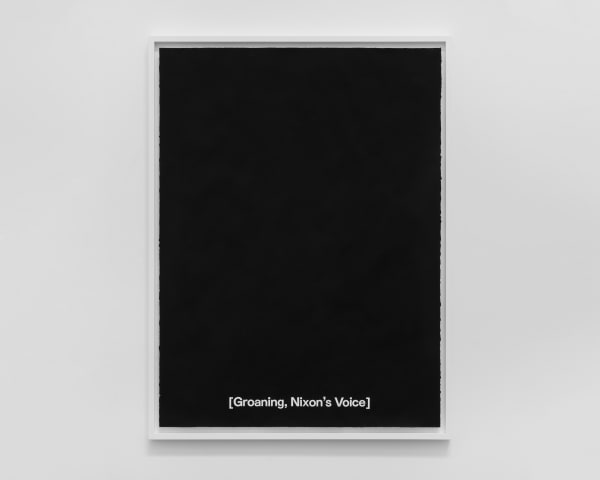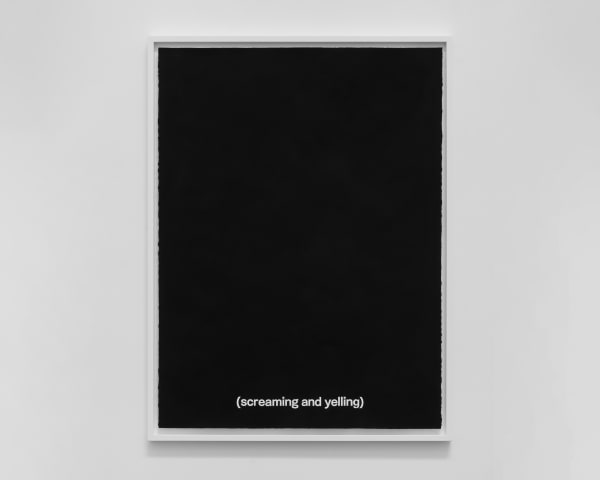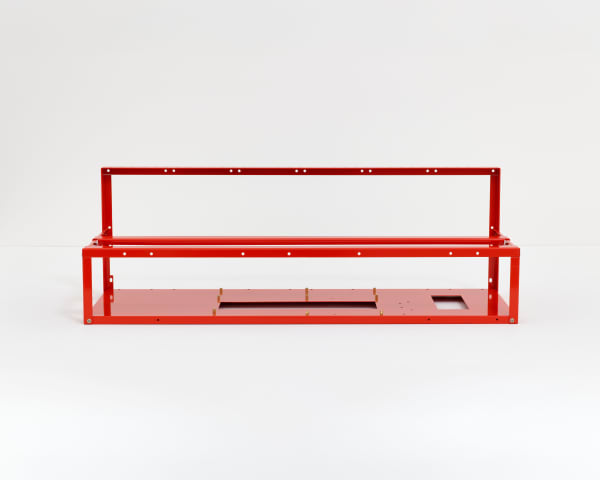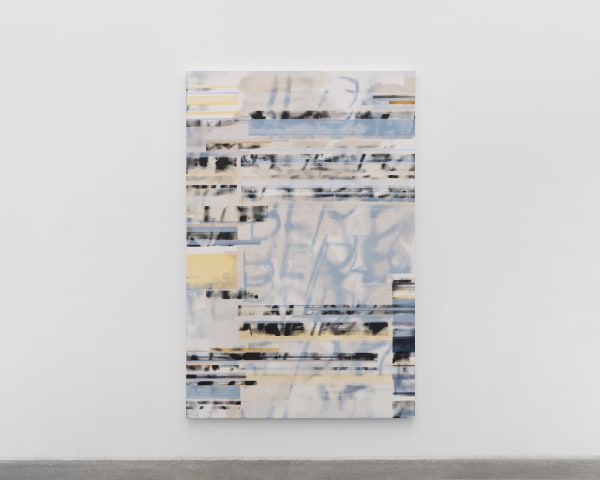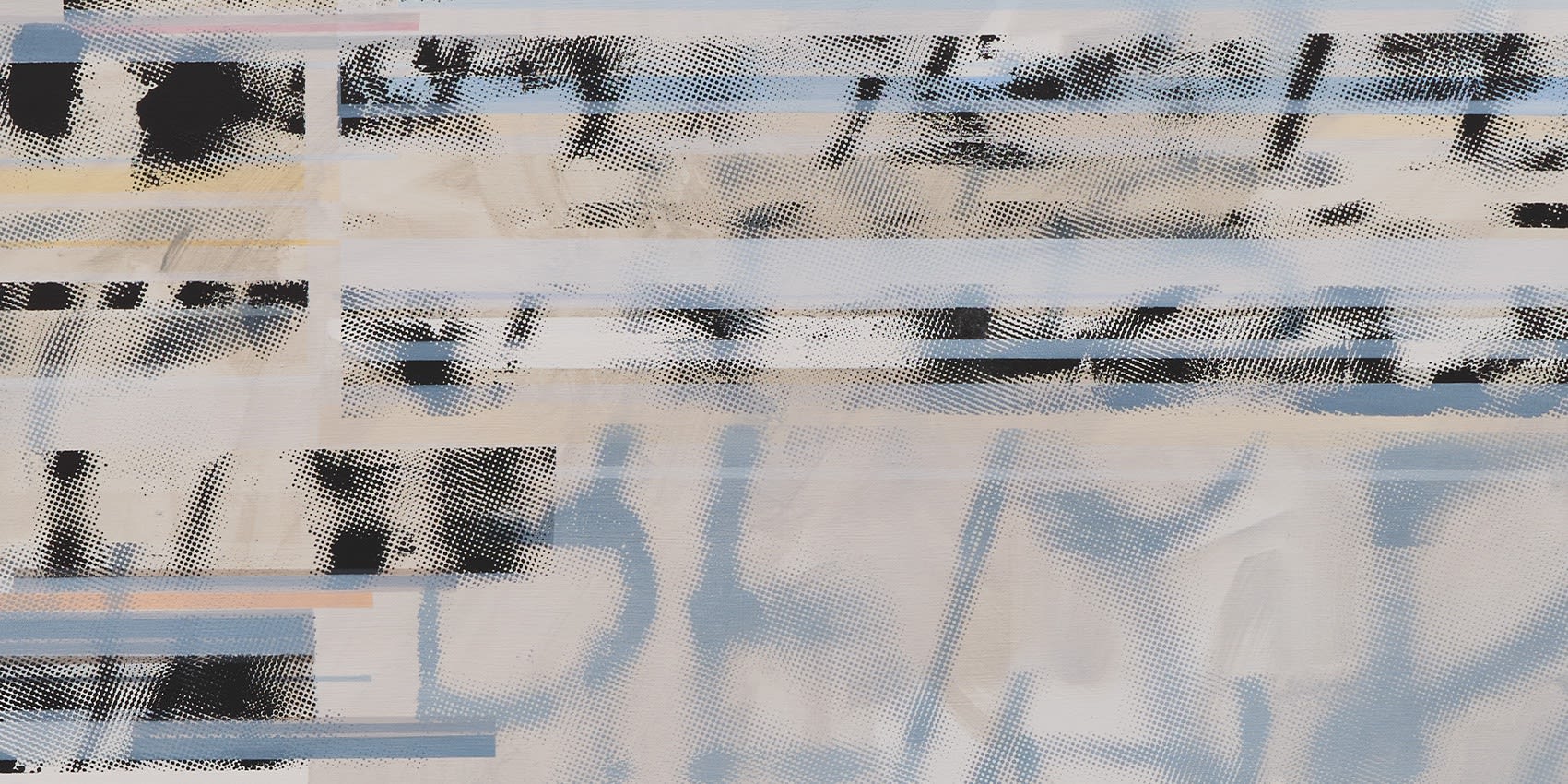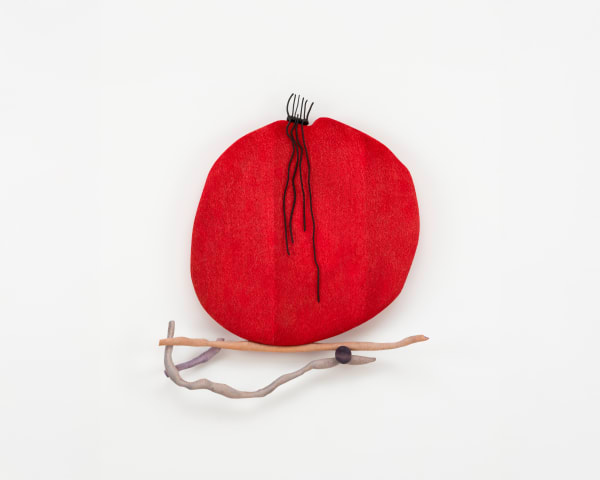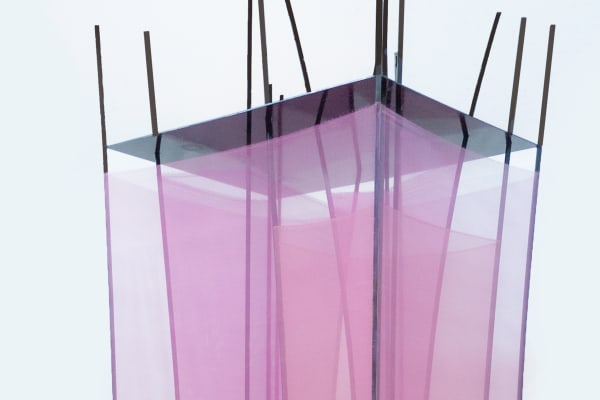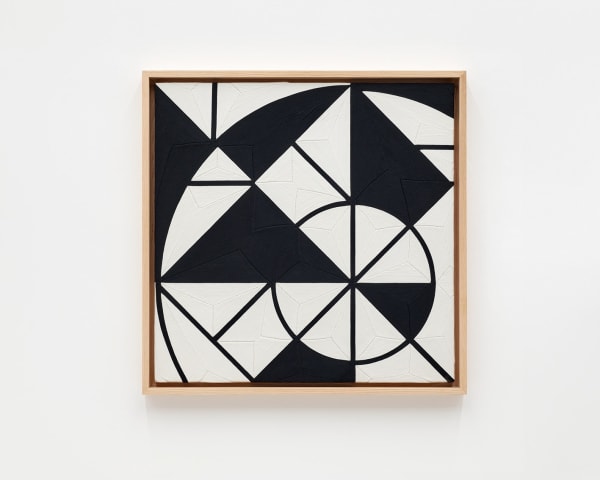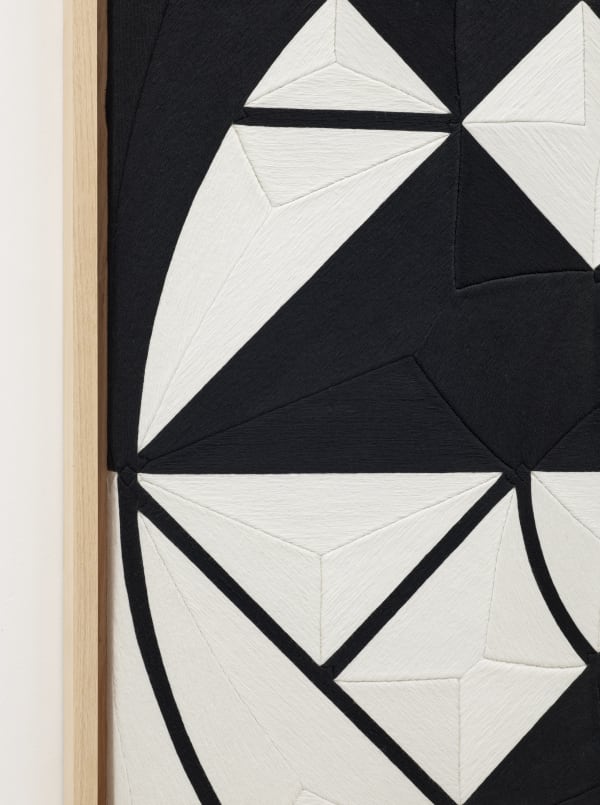-
ART BRUSSELS 2025
BOOTH 5B-28
APRIL 24 – 27, 2025
Carlos Amorales
Gardar Eide Einarsson
Mads Gamdrup
Rebecca Lindsmyr
Matthew Ronay
Tove Storch
Ed Templeton
Eduardo Terrazas
All prices are displayed excluding tax or VAT, if applicable.
-
Carlos Amorales
Carlos Amorales' (b. 1970, Mexico) Fragmented Typefaces is a series of paintings that transforms language into a visual enigma, obscuring autobiographical prose poems beneath layers of encrypted alphabets rendered in oil stick on canvas. These invented characters replace traditional letters, turning personal texts into abstract compositions. The resulting works resist easy interpretation, blurring the line between text and image, communication and concealment. What initially appears as patterned abstraction slowly reveals itself as a coded narrative, drawing viewers into the tension between visibility and erasure, meaning and mystery.
Amorales' approach reflects his broader interest in the instability of language and the complexities of translation. By embedding personal memories in unreadable scripts, he challenges conventional storytelling, favoring fragmented, multilayered expression over linear narrative. Fragmented Typefaces becomes both a visual archive and a conceptual riddle – one that underscores Amorales' ongoing exploration of identity, authorship, and the boundaries of legibility in a world shaped by mediated symbols.
-
Gardar Eide Einarsson
Gardar Eide Einarsson’s (b. 1976, Norway) recent gouaches on paper transform fragments of closed-captioning text from film and television into stark, text-based compositions. Disembodied phrases – once cues for sound, gesture, or music – are set against black backgrounds, becoming carriers of mood and psychological tension. Stripped of their original context, they hover between the poetic and the foreboding, inviting the viewer to confront the tension between visibility and absence, narrative and silence.
At the centre of Einarsson’s practice is a critical inquiry into systems of control, identity, and perception. By using closed-captioning, designed to translate sound into visual information, he prompts reflection on how meaning is constructed in the absence of clarity. This results in a charged stillness that challenges our reliance on mediated narratives to understand the world.
Alongside these works, Einarsson’s Mining Rig (RAL 2002 VERMILLION) (2022) expands his exploration of value and control. This series of steel sculptures, powder-coated in RAL colors inspired by Donald Judd sketches, critiques technological obsolescence and the evolution of cryptocurrency from individual mining rigs to large-scale operations. Combining Beuysian ideas of art as a repository for energy with minimalism’s use of industrial relics, Mining Rig comments on contemporary capitalism and the fleeting nature of technology.
-
-
Mads Gamdrup
At first glance, Mads Gamdrup’s (b. 1967, Denmark) paintings may appear reductive, limited to material and color. Yet, a closer look reveals a bodily presence – gestural brushstrokes, traces of movement, the impression of arms and hands in motion. Materiality is central: the tactility of pigment, the weight of the brushstroke, the way a color can be perceived not just with the eyes but with the body. By stripping away imagery and composition, the awareness of surface, texture and interaction with light and color is heightened. Rather than presenting a static field, the paintings demand slow looking, where perspective shifts over time, posing essential questions about perception, contemplation and the act of seeing itself.
By reducing painting to a single color, Gamdrup invites a form of embodied looking – one that moves beyond recognition into sensory experience. The paintings are not about what they depict, but about how they are experienced. They exist in relation to the viewer, unfolding in time and space. The viewer’s movement through the space interacts with the work, and the experience shifts according to the light, scale, and texture of the painting.
-
Rebecca Lindsmyr
In her new body of work, Rebecca Lindsmyr (b. 1990, Sweden) continues to probe the tensions between gesture, language, and the construction of the self. Drawing from psychoanalytic and post-structuralist thought, she uses the painterly surface as both a site of projection and resistance – a field where subjectivity is formed, layered, blocked, and reassembled. The artist returns to her own handwritten signatures, repurposing them as painterly gestures. These once-functional signifiers are reframed through mechanical processes such as screen printing and repetition. While bending a tradition of reading the gesture as a trace of inner life or authorship, Lindsmyr exhausts the mark of the self, turning it into something simultaneously intimate and estranged.
The surfaces of her paintings unfold like palimpsests, built through gestures of concealment and revelation. Areas of the canvas are masked or overwritten, leaving behind traces, glitches, and interruptions. Some marks feel fluid and direct, others are obscured or fragmented, like half-formed thoughts. This rhythm of layering could be suggested to mirror the psychological processes we all move through: absorbing, editing, repressing, and resurfacing.
Operating at the intersection of painterly discourse and critical theory, Lindsmyr's practice positions painting not as image, but as body – a layered, intertextual, psychological construction. What may at first appear as formal experimentation unfolds into a dense meditation on identity, symbolic systems, and the continuous negotiations of becoming.
-

-
Matthew Ronay
Matthew Ronay’s (b. 1976, USA) Attendant (2024) is a wall-based sculpture that conjures a sense of organic mystery, blending abstract form with biomorphic suggestion. Carved from dyed basswood, the piece appears to grow and shift, as if it were a living entity caught between stages of transformation. Rooted in automatic drawing, Ronay’s process allows subconscious gestures to guide the shape, resulting in a composition that feels intuitive yet deliberate – full of rhythmic textures and unexpected color harmonies.
With Attendant, Ronay invites viewers into a space where familiar natural references melt into something unnameable. The sculpture’s structure emphasizes both connection and separation, creating a quiet tension between its parts. This ambiguity, paired with a tactile visual language, encourages reflection on the boundaries between the organic and the abstract, the internal and external, the known and the unknowable.
-
Tove Storch
In Tove Storch’s (b.1981, Denmark) Untitled, a state of potentiality is translated into tangible form. Here, the intelligibility of material and form is used to wedge, balance, and offset the inherent force of physical matter. This process is open-ended and vividly metamorphic; the artist is both witness and accomplice. If, on one side, she lends her hand to the creation of a structure, on the other, she steps back – allowing the material’s inner logic to unfold and observing its manifestation with the same sense of wonder as the viewer.
Often working with silk and metal, Storch positions her mode of expression between the strictly formal and something intimately connected to the body and emotions. She frequently offsets tension and slackness in her exploration of shifting states of strength: Can silk break down metal? How does the liquid shape the solid? What effect does time have on form? Through their colors, subject matter, and gestures, the works weave themselves into archetypal narratives of gender, romance, and sexuality, while quietly resisting fixed interpretations – slipping free from preconceived readings with a subtle, graceful defiance.
-
Ed Templeton
Ed Templeton's (b. 1972, USA) Lurking in Copenhagen (2010) is a raw and intimate series that captures everyday moments in the streets of Copenhagen, focusing on people who often exist outside the spotlight. With his signature mix of candid photography, handwritten notes, and drawings, Templeton creates layered narratives that feel both observational and personal. The images reflect themes of youth, isolation, and fleeting human connection, turning ordinary scenes into something quietly powerful.
Templeton’s roots in skateboarding culture give him a unique access to and understanding of street life and subcultures, which adds depth to his work. In Lurking in Copenhagen, his camera moves with instinct, picking up on subtle gestures and unguarded expressions. The result is a compelling look at a city’s undercurrent, seen through the eyes of someone deeply tuned into the unspoken moments that define us.
-
Eduardo Terrazas
Eduardo Terrazas (b. 1936, Mexico) draws from a geometric language and a method inspired by the tablas of the Huichol, an Indigenous Mexican tribe. Using symmetrical structures as matrices for countless variations, Terrazas explores cosmic concepts, placing the earth at the center and the celestial dome at the periphery, while essential forces – gravitational, electromagnetic, and nuclear – compete for the space in between.
The technique involves affixing colored wool onto wooden panels coated with Campeche wax, acting as an adhesive. The thread moves along, reproducing the lines, curves, meanders, and changes of direction required by the motif. This process entails tirelessly repeating back and forth movement, during which each strand is tightly glued along the previous one, leaving no gaps or openings between them.
-
-
Installation views
-
For general inquiries, please contact: inquire@nilsstaerk.dk
All prices are displayed excluding tax or VAT, if applicable.



